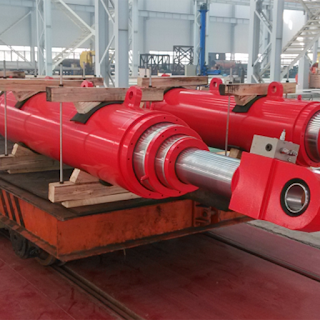HOW TO MEASURE A HYDRAULIC CYLINDER REPLACEMENT?
In order to measure and decide which hydraulic cylinder you need, first of all you would have to visually determine the type of hydraulic cylinder you try to replace. Here are the the main three types of hydraulic cylinders:
- Piston rod cylinder – has piston inside, can be single and double acting (ex. Clevis cylinder)
- Plunger cylinder – mostly is a single acting cylinder (ex. Snow plow cylinder)
- Telescopic cylinder – has multiple stages, can be single and double acting
Main hydraulic cylinder attributes are as follows:
Bore diameter
Rod diameter
Retracted length
Extended length
Stroke
Mounting ends
Hose ports
Working pressure
Here is a detailed guide on how to properly take measurements of any plunger or piston rod hydraulic cylinder.
STEP 1:
Piston diameter or inside barrel diameter is the main dimension of the hydraulic cylinder and known in the hydraulic industry as “BORE”. Therefore it has to be measured first. If your cylinder is taken apart, simply measure either inside diameter of the barrel (cylinder tubing) or measure actual piston diameter across.
STEP2:
The next step is to determine rod diameter. Rod of the hydraulic cylinder is a round chrome plated steel bar that performs reciprocating motion. As commonly described by our clients, it’s a shiny part that comes out from the cylinder. Caliper can easily take care of rod measurement. Simply measure rod diameter (thickness) with a caliper. Rod is one of the most significant parts in the hydraulic cylinder because main force during operation applies on the rod. Proper analysis of rod size and specifications will prevent bend rod situation.
STEP 3:
Next thing to do is to measure the retracted length of the cylinder. Retracted length is the distance between centers of cylinder mounting pins (pin holes) when the hydraulic cylinder is completely retracted inside (closed). Retracted length can be measured with any standard tape measure. Without this measurement, the cylinder will not be installed and operated properly on machinery.
STEP 4:
Extended length should be defined next. Extended length is exactly the same as retracted length described in step 3, with the only difference that hydraulic cylinder has to be fully extended (open) when measured. Just like with retracted length, use tape measure. It is a fairly simple procedure unless your piece of equipment is down and the hydraulic cylinder is not functional. In a situation like this, you would have to take the cylinder off the machinery and extend it manually.
STEP 5:
With both above lengths on hand, we can calculate the stroke of the hydraulic cylinder. Stroke is a travel distance and calculated simply by subtracting one from another. Stroke = extended length – retracted length. Yes,it’s that simple.




Comments
Post a Comment